As a loving dog owner, you’re always on the lookout for your furry friend’s well-being. But have you ever found yourself scratching your head in confusion as your dog happily munches on socks, rocks, or even paper? Do you ever wonder, “Why does my dog eat everything?” If so, you’re not alone! Many dog owners face the perplexing issue of canine pica. In this comprehensive guide, we’ll delve into the reasons behind this unusual behavior and provide helpful tips to keep your dog safe and healthy. So, grab a cup of coffee, get cozy, and let’s embark on this journey to better understand your beloved four-legged companion.
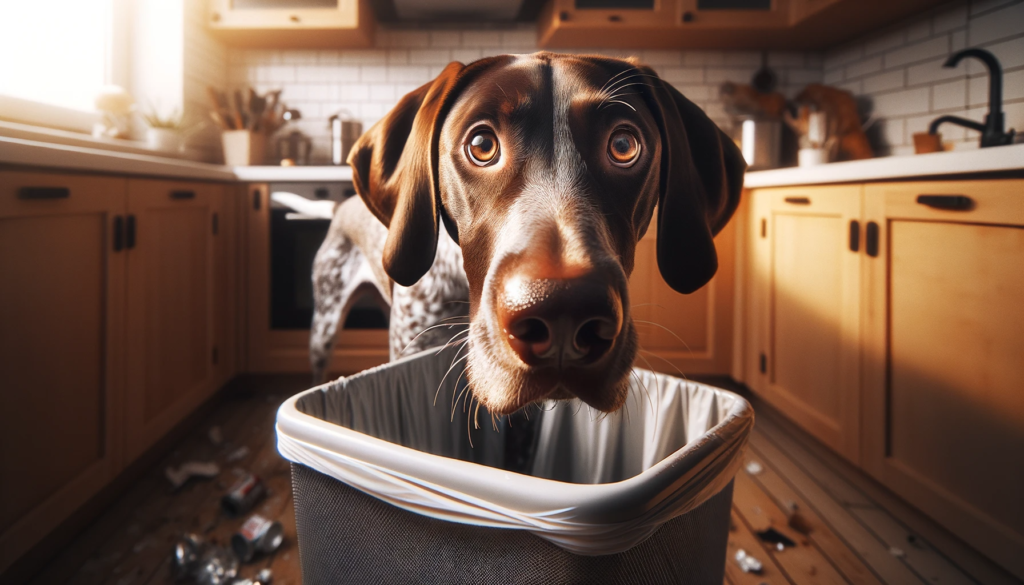
Canine Pica Uncovered: Defining the Irresistible Urge to Eat Non-Food Items
As we venture into the world of canine pica, it’s essential to have a clear understanding of what this behavior entails. In this section, we’ll define pica, explore the common non-food items that dogs with pica are drawn to, and differentiate between normal chewing behavior and pica. So, let’s dive in and uncover the secrets of this irresistible urge that compels our furry friends to eat the strangest things!
Pica in Dogs: What It Means and How It Manifests
Pica is a term that may be new to many dog owners, but it’s crucial to grasp its meaning to better understand your dog’s behavior. Simply put, pica is an eating disorder where dogs feel an overwhelming urge to consume non-food items. Objects eaten by dogs vary from socks, plastic bags, and paper to rocks, sticks, and feces.
What makes pica even more baffling is that it can manifest differently in each dog. Some dogs might have a preference for specific items, while others will eat almost anything within reach. Additionally, the frequency of this behavior can vary, with some dogs indulging in pica occasionally and others partaking in it more regularly. Pica isn’t just a quirky canine habit. It can pose serious risks to your dog’s health. It is vital to identify and address the issue promptly. In the upcoming sections, we’ll delve deeper into the possible causes and solutions for canine pica.
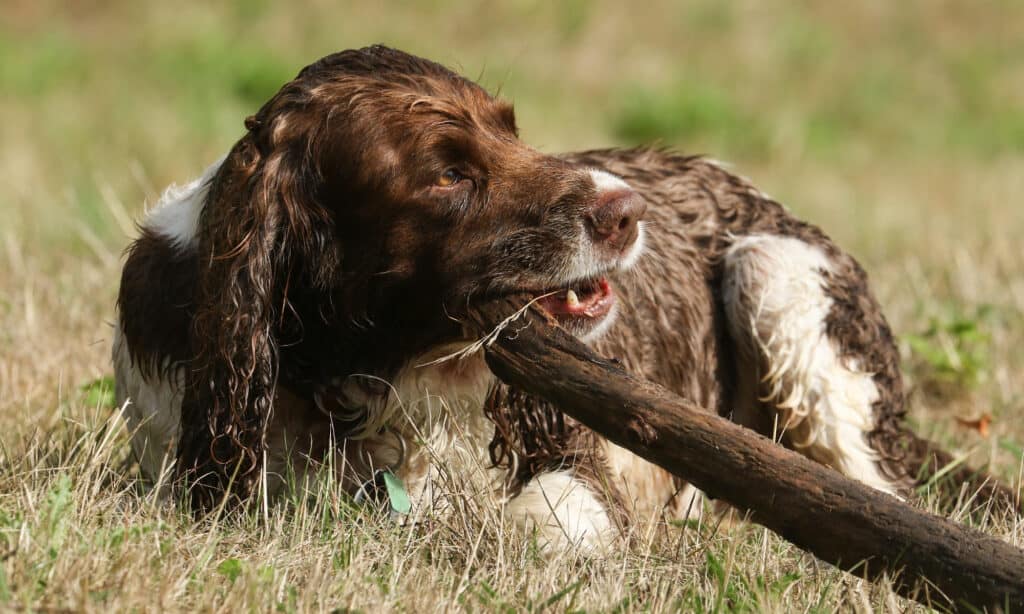
Common Culprits: Identifying Non-Food Items Frequently Consumed by Dogs with Pica
When it comes to pica, our canine companions can be surprisingly inventive in their choice of non-food items to consume. Identifying the most commonly ingested objects can help you be more vigilant and take preventative measures to protect your dog’s health. Here are some of the usual suspects that dogs with pica tend to gravitate towards:
- Socks and clothing items: For some dogs, the smell and texture of socks, underwear, or other clothing items can be irresistible. Keep laundry out of reach and make sure to pick up any clothing left on the floor.
- Rocks and stones: Outdoor-loving dogs might develop a taste for rocks and stones, which can lead to serious health complications. Supervise your dog during outdoor playtime to prevent this behavior.
- Sticks and wood: Chewing on sticks and pieces of wood might seem like a harmless pastime. For dogs with pica, this activity can escalate into ingesting these materials, potentially causing injuries or blockages.
- Plastic bags and wrappers: The crinkly texture and smell of plastic bags, food wrappers, or even plastic toys can attract some dogs. Dispose of these items properly and keep them out of your dog’s reach.
- Paper products: Dogs with pica might find paper items like tissues, napkins, or even books appealing. Store these items in closed cabinets or drawers to limit your dog’s access.
- Feces: While the idea of eating feces (coprophagia) may seem repulsive to us, some dogs find this behavior enticing. It’s essential to maintain a clean environment and promptly remove feces from your yard or during walks.
Remember, every dog is unique, and these are just a few examples of the items that dogs with pica might consume. Monitoring your dog’s behavior and environment can help you identify potential hazards and take steps to keep them safe.
Chewing vs. Pica: Distinguishing Between Normal and Abnormal Behavior
You might wonder whether your pet’s fascination with non-food items is just innocent chewing or a sign of pica. Distinguishing between these two behaviors is crucial. Normal chewing is a common and healthy canine activity, while pica can be harmful to your dog’s well-being.
- Normal chewing: Dogs, especially puppies, explore the world around them through their mouths. Chewing is a natural and necessary activity that helps relieve teething pain, maintain dental hygiene, and alleviate boredom. Providing your dog with appropriate chew toys can help satisfy this need and discourage destructive chewing.
- Pica: When a dog’s chewing behavior crosses the line into consuming non-food items, it’s likely pica. Unlike normal chewing, pica involves the actual ingestion of objects that can pose risks to your dog’s health. The key difference between normal chewing and pica is the consumption of these non-food items.
Observe your dog closely and note what they consume to determine if their behavior is pica. In the next sections, we’ll delve into the potential causes, dangers, and management strategies for canine pica.
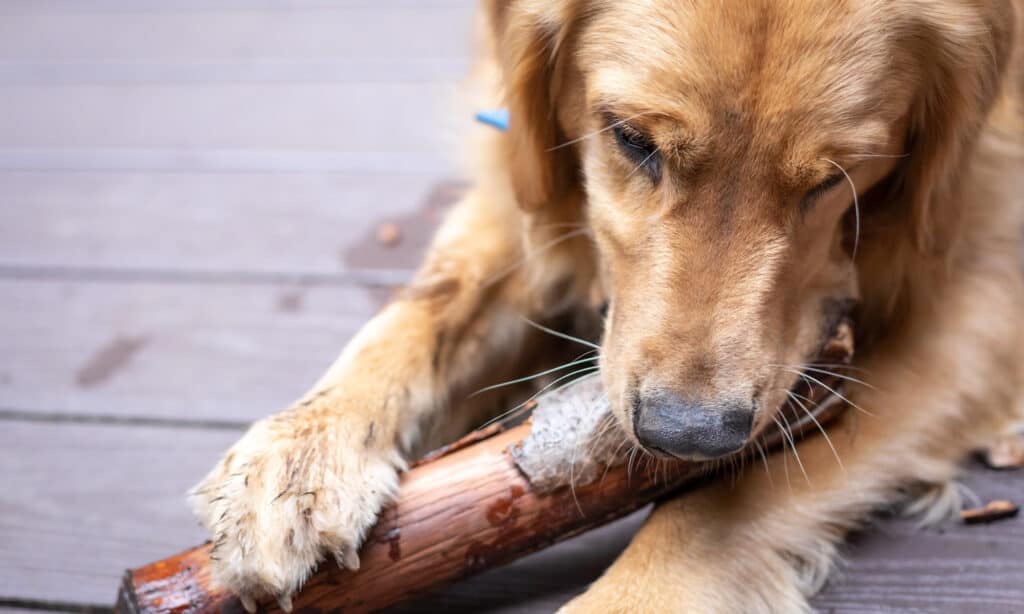
Root Causes of Canine Pica: Exploring Medical, Behavioral, and Genetic Factors
Medical Explanations Behind Your Dog’s Pica
Now that we’ve identified the difference between normal chewing and pica, it’s time to explore the medical reasons behind this peculiar behavior. Just like humans, dogs can experience a range of health issues that may lead to the development of pica. In this section, we’ll discuss nutritional deficiencies, gastrointestinal disorders, and parasites as potential medical causes for your dog’s pica. By understanding these factors, you’ll be better equipped to help your furry friend overcome this challenging behavior. So let’s dive in and explore the medical side of canine pica!
The Role of Nutritional Deficiencies in Pica
One of the primary medical causes of pica in dogs is nutritional deficiencies. Just like humans, dogs require a balanced diet to maintain their overall health. Unmet nutritional needs can cause dogs to eat non-food items to compensate for the lack of essential nutrients.
Some common nutritional deficiencies that may lead to pica include:
- Lack of vitamins and minerals: A diet lacking in essential vitamins and minerals, such as calcium, iron, or zinc, can result in pica. Dogs may instinctively consume non-food items like rocks or soil in search of these missing nutrients.
- Insufficient protein or carbohydrates: If your dog’s diet is low in protein or carbohydrates, they may feel unsatisfied and turn to non-food items as a source of energy. This can lead to the development of pica.
- Inadequate fiber intake: A lack of fiber in your dog’s diet can affect their gastrointestinal health and lead to pica. Consuming items like paper, grass, or even feces may be an attempt to add roughage to their diet.
Your veterinarian can evaluate your dog’s diet and suggest changes like adjusting food, adding supplements, or modifying feeding times. Addressing these nutritional imbalances can play a significant role in managing and preventing pica in your canine companion.
Gastrointestinal Troubles and Pica Behavior
Another medical factor that could contribute to your dog’s pica is gastrointestinal (GI) issues. When a dog experiences discomfort or pain in their digestive system, they may seek relief by consuming non-food items. Let’s take a closer look at some of the common GI problems that might trigger pica behavior in your furry friend:
- Upset stomach: If your dog is experiencing an upset stomach, they might eat grass, soil, or other non-food items to induce vomiting and relieve their discomfort. While occasional grass-eating is considered normal for dogs, excessive consumption can indicate a more serious underlying issue.
- Inflammatory bowel disease (IBD): IBD is a chronic condition characterized by inflammation of the digestive tract. Dogs with IBD may develop pica due to discomfort, altered taste, or an attempt to soothe their inflamed GI tract.
- Gastrointestinal obstructions: Blockages in your dog’s digestive system can cause severe discomfort. This may lead them to consume non-food items in an attempt to dislodge the obstruction. However, this behavior can exacerbate the problem by adding more indigestible material to the blockage.
If your dog shows pica behavior and gastrointestinal symptoms like vomiting, diarrhea, or loss of appetite, see your vet quickly. Quick diagnosis and treatment of GI problems can ease your dog’s discomfort and decrease their pica behavior.

Pesky Parasites: How They Can Contribute to Pica
Parasites are another medical factor that can contribute to pica behavior in dogs. These unwelcome guests can wreak havoc on your dog’s health, leading them to seek relief by ingesting non-food items. Let’s examine some of the ways parasites can play a role in your dog’s pica:
- Intestinal parasites: Worms such as roundworms, hookworms, and tapeworms can infest your dog’s digestive system, causing discomfort, malnutrition, and anemia. As a result, your dog may develop pica in an attempt to address these issues or alleviate the discomfort caused by the parasites.
- External parasites: Fleas, ticks, and mites can cause severe itching and irritation on your dog’s skin. In some cases, dogs may resort to ingesting non-food items like dirt or even their own fur to relieve the itching sensation.
- Coprophagia and parasites: Consuming feces, also known as coprophagia, is a common form of pica behavior in dogs. This behavior can expose your dog to harmful parasites present in the feces of other animals, potentially perpetuating a cycle of infection and pica.
Regular vet check-ups and parasite prevention measures are crucial for protecting your dog’s health. They also help minimize the risk of pica behavior.
Behavioral Triggers of Canine Pica
In addition to medical explanations, it’s important to consider the psychological factors that may contribute to your dog’s pica behavior. In this section, we’ll delve into the various behavioral triggers. These include anxiety, boredom, and attention-seeking, which can lead to the consumption of non-food items. By unraveling the emotional and psychological aspects of canine pica, you’ll be better equipped to provide the necessary support and guidance to help your furry friend overcome this challenging habit. So, let’s dive deeper into the behavioral triggers of canine pica and uncover the hidden reasons behind your dog’s unusual eating habits!
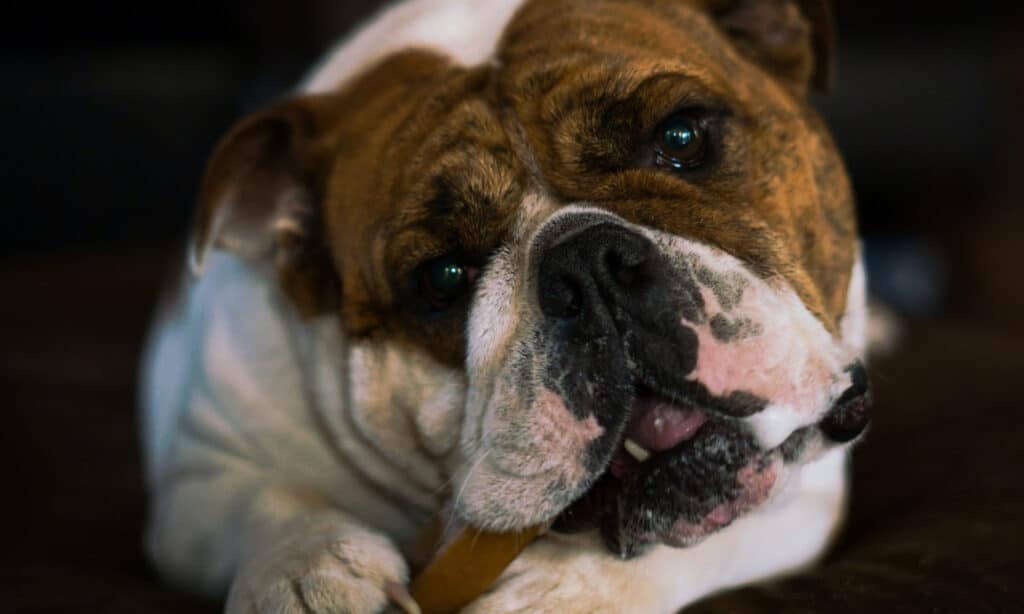
The Anxiety Connection: How Stress Leads to Pica
Anxiety and stress are common behavioral triggers of pica in dogs. Just like humans, dogs can experience a range of emotions. When they feel overwhelmed or stressed, they may seek comfort through unusual behaviors, such as consuming non-food items. Here’s a closer look at how anxiety and stress can lead to pica in dogs:
- Separation anxiety: Dogs who experience separation anxiety may engage in pica as a coping mechanism when left alone. Ingesting non-food items can provide a sense of comfort or help pass the time during their owner’s absence.
- Environmental changes: Dogs are creatures of habit, and changes in their environment, such as moving to a new home, the arrival of a new family member, or even rearranging furniture, can cause stress and anxiety. In response, they may turn to pica as a way to self-soothe and regain a sense of control.
- Past trauma: Abused dogs may develop anxiety-related pica to cope with past trauma. Consuming non-food items can offer a temporary distraction from their emotional distress.
- Phobias and fears: Certain fears, like loud noises, may cause anxiety-induced pica in dogs with specific phobias. In these situations, ingesting non-food items can help them cope with their heightened emotional state.
For anxiety-related pica, consult a vet or animal behaviorist to create a tailored treatment plan. This may involve behavior modification techniques, environmental changes, or medication to help manage your dog’s anxiety and reduce pica behavior.
Boredom Bites: Pica as a Coping Mechanism
Boredom is another behavioral trigger that can lead to pica in dogs. When dogs lack mental stimulation or physical activity, they may resort to consuming non-food items as a form of entertainment or self-soothing. Let’s discuss how boredom can contribute to pica and what you can do to keep your dog engaged and happy:
- Insufficient mental stimulation: Dogs are intelligent animals that need regular mental challenges to stay happy and healthy. When they don’t receive enough mental stimulation, they may seek out alternative ways to engage their minds, such as exploring and ingesting non-food items.
- Lack of physical exercise: Regular physical activity is crucial for a dog’s overall well-being. Dogs that don’t get enough exercise may become restless and turn to pica as a way to expend pent-up energy or alleviate boredom.
- Inadequate social interaction: Dogs are social creatures, and a lack of interaction can lead to boredom and frustration. This, in turn, can result in pica behavior as your dog seeks alternative ways to cope with their unmet social needs.
Prevent pica by providing a well-rounded routine: mental stimulation, physical exercise, and social interaction for your dog’s boredom. Some strategies to combat boredom include:
- Incorporating puzzle toys or interactive games into your dog’s daily routine
- Offering a variety of appropriate chew toys to keep them engaged
- Ensuring they receive regular walks, playtime, or other forms of physical activity
- Enrolling your dog in obedience classes, agility training, or other social activities
By addressing your dog’s need for stimulation and engagement, you can effectively reduce the likelihood of boredom-related pica behavior.
Craving Attention: Pica in Attention-Seeking Dogs
In some cases, dogs may resort to pica as a way to capture their owner’s attention. If your dog notices that consuming non-food items elicits a strong reaction from you, they may continue this behavior to gain your attention or provoke a response. Here’s how attention-seeking can contribute to pica and what you can do to address this issue:
- Reinforcing behavior: If you react strongly to your dog’s pica, whether through scolding, chasing, or even laughing, your dog may interpret this as a form of attention or reinforcement. This can inadvertently encourage them to continue the behavior in the future.
- Unmet emotional needs: Dogs that feel neglected or crave more attention from their owners. They may resort to attention-seeking behaviors, such as pica, to fulfill their emotional needs.
To manage attention-seeking pica, consider the following strategies:
- Avoid reinforcing the behavior: When your dog engages in pica, try not to react strongly, as this can inadvertently encourage the behavior. Instead, calmly redirect your dog’s attention to a more appropriate activity or toy.
- Reward positive behavior: Be sure to praise and reward your dog when they engage in appropriate behaviors, such as playing with their toys or chewing on designated chew items. This will help reinforce good habits and discourage pica behavior.
- Offer quality attention: Make sure to spend quality time with your dog. Engage in activities they enjoy, such as playing, walking, or cuddling. By meeting your dog’s emotional needs and providing them with consistent, positive attention, you can help reduce their desire to engage in attention-seeking pica.
Understanding attention-seeking’s role in pica behavior can help redirect your dog’s focus to healthier activities.
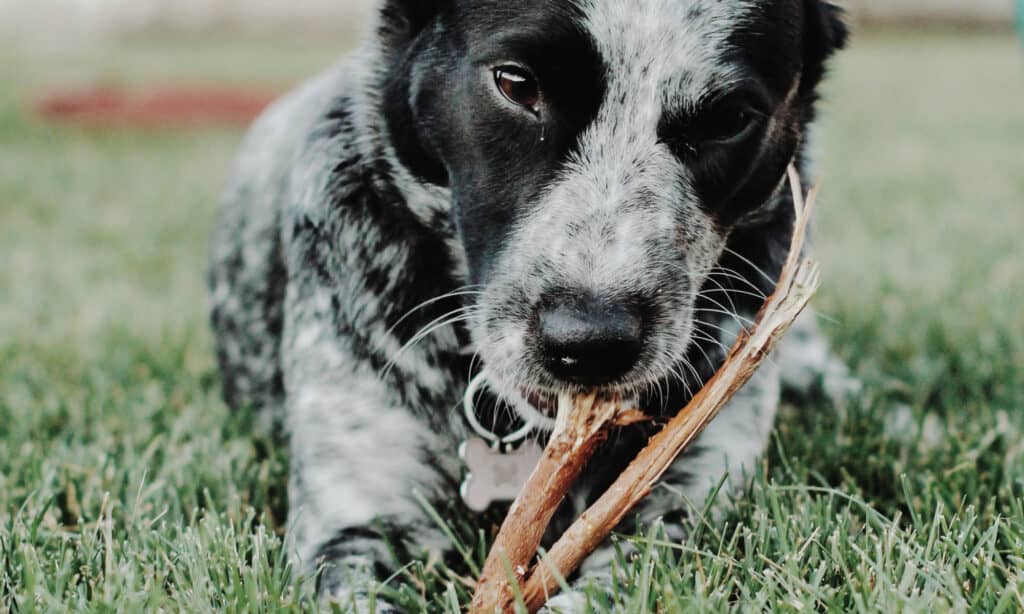
Genetic Predisposition: Is Your Dog’s Pica Inherited?
While factors like environment and individual experiences play significant roles in pica behavior, it’s worth considering if your dog’s pica might be influenced by their genetic makeup. Some breeds may be more predisposed to pica due to their natural instincts or specific traits. Let’s take a closer look at the potential connection between genetics and pica in dogs:
- Breed instincts: Certain breeds, such as Labradors and Golden Retrievers, are known for their strong oral fixation. This can lead to a tendency to carry or chew on objects. In some instances, this fixation can extend to consuming non-food items, resulting in pica behavior.
- Hereditary factors: While more research is needed to firmly establish a link between genetics and pica, some studies suggest that pica may be more common in specific dog breeds or bloodlines. This indicates that there could be a hereditary aspect to the behavior.
- Genetic predisposition to anxiety: Some dog breeds are more susceptible to anxiety and stress-related behaviors, which can trigger pica. If your dog’s breed is known for being prone to anxiety, it’s essential to provide them with the necessary support and guidance to help manage their stress levels and minimize the risk of pica.
You can help reduce the likelihood of pica behavior by offering appropriate mental and physical stimulation, addressing any anxiety issues, and monitoring your dog’s environment. This applies regardless of their genetic background.
Hazards of Canine Pica: Uncovering the Risks to Your Dog’s Health and Well-being
As we’ve explored the various factors that contribute to canine pica, it’s crucial to understand the potential hazards associated with this unusual behavior. Consuming non-food items can pose significant risks to your dog’s health and well-being, ranging from gastrointestinal issues to life-threatening emergencies. In this section, we’ll dive into the various dangers of canine pica. This will give you the knowledge to recognize potential risks and take prompt action to protect your beloved pet. Let’s delve into the hazards of canine pica and uncover the threats it poses to your dog’s health and well-being.
Intestinal Obstructions: When Pica Turns Dangerous
One of the most significant risks associated with canine pica is the potential for intestinal obstructions. When your dog consumes non-food items, they can become lodged in their digestive tract, blocking the passage of food and other material. This can lead to severe complications and may even be life-threatening. Here’s what you need to know about intestinal obstructions caused by pica:
- Symptoms of an obstruction: Some common signs that your dog may be experiencing an intestinal obstruction include vomiting, diarrhea, abdominal pain, lethargy, and loss of appetite. If you notice any of these symptoms, it’s essential to consult your veterinarian immediately.
- Diagnosis and treatment: To diagnose an intestinal obstruction, your veterinarian may use imaging techniques such as X-rays or ultrasound. Depending on the severity and location of the blockage, treatment options may include medication, dietary changes, or surgery to remove the obstruction.
- Preventing obstructions: Prevent obstructions from pica by addressing its underlying reasons and keeping non-food items out of reach. Reduce the risk by providing chew toys, proper nutrition, and addressing any behavioral or medical issues.
Understanding the dangers of intestinal obstructions is crucial in recognizing the hazards of canine pica. By being vigilant and proactive, you can help protect your dog’s health and well-being from this potentially dangerous consequence.

Poisoning Perils: The Hidden Dangers of Ingesting Non-Food Items
Another serious hazard associated with canine pica is the risk of poisoning. When dogs consume non-food items, they may inadvertently ingest toxic substances that can lead to a range of health complications, some of which can be life-threatening. Let’s take a closer look at the poisoning perils related to pica and the steps you can take to protect your dog:
- Common toxic items: Some everyday household items can be poisonous to dogs when ingested. These include cleaning products, pesticides, batteries, certain plants, and human medications. It’s crucial to be aware of these hazards and keep them out of your dog’s reach.
- Signs of poisoning: Symptoms of poisoning in dogs can vary widely depending on the toxic substance ingested. Some common signs include vomiting, diarrhea, seizures, difficulty breathing, and lethargy.
- Treatment and prevention: Timely treatment is essential in cases of poisoning, and your veterinarian will determine the appropriate course of action based on the type of toxin ingested and the severity of the symptoms. To prevent poisoning incidents, ensure that all potentially toxic items are securely stored and inaccessible to your dog.
By being aware of the poisoning perils associated with ingesting non-food items, you can take proactive measures to safeguard your dog’s health and well-being.
Dental Damage: How Pica Can Harm Your Dog’s Teeth
Pica doesn’t just pose risks to your dog’s internal health; it can also lead to dental damage. Chewing on or consuming hard, abrasive, or sharp non-food items can cause harm to your dog’s teeth and gums, resulting in pain and potential long-term dental issues. Let’s explore the impact of pica on your dog’s dental health and how you can protect their pearly whites:
- Types of dental damage: Dental damage from pica can include broken or cracked teeth, worn-down enamel, gum injuries, and tooth loss. These issues cause discomfort and pain and can worsen if untreated.
- Signs of dental issues: Some common signs that your dog may be experiencing dental problems due to pica include bad breath, excessive drooling, difficulty eating, or visible damage to their teeth and gums. If you notice any of these symptoms, consult your veterinarian for a thorough dental examination.
- Prevention and treatment: Address root causes and provide safe chew toys to prevent dental damage caused by pica behavior in dogs. Regular dental check-ups with your veterinarian can help identify and address any issues early on. If your dog has already suffered dental damage due to pica, your veterinarian may recommend treatments such as dental cleaning, tooth extraction, or other procedures depending on the severity of the damage.
Maintaining good dental hygiene and addressing the underlying causes of pica will help ensure your dog’s long-term health and well-being.

Injury Risks: Understanding the Physical and Emotional Consequences of Pica
Pica can harm your dog in many ways. It can cause obstructions, poisoning, and dental damage. Also, it can cause emotional and physical problems. Eating non-food items can harm the body. The stress caused by pica can affect the dog’s overall well-being. Let’s delve into the different types of injuries that can result from pica and how to tackle them:
- Physical injuries: When your dog consumes sharp or rough objects, they might suffer from cuts or tears in their mouth, throat, or digestive system. These injuries can be painful and may need medical attention to prevent infections or further complications.
- Emotional fallout: The stress and anxiety that can drive pica can also impact your dog’s emotional health. Incidents related to pica can be upsetting for both you and your dog, leading to feelings of frustration, guilt, and concern. Repeated episodes can cause fear or anxiety in dogs, affecting their happiness and quality of life in certain situations.
- Prevention and support: To prevent injuries from pica, address root causes. Provide stimulation, balanced diet, vet checkup, and trainer/behaviorist support for anxiety/stress.
By being aware of the various injury risks related to canine pica, you can take proactive measures to protect your dog’s physical and emotional well-being.
Emotional Toll: The Impact of Pica on Dogs and Their Owners
Dealing with canine pica can be emotionally challenging not only for your dog but also for you as their owner. The stress and concern surrounding this behavior can strain the bond between you and your pet. It is essential to understand and manage the emotional aspects of pica. Let’s explore the emotional toll pica can have on both dogs and their owners:
- Frustration and worry: As a dog owner, it’s natural to feel frustrated and worried when your dog exhibits pica behavior. You may be concerned about their health, feel guilty about not being able to control the situation, or struggle with the financial burden of medical treatments.
- Impact on the dog-owner bond: Repeated pica incidents can put stress on the relationship between you and your dog. You may find yourself feeling impatient or disappointed, while your dog may sense your emotions and become more anxious or fearful.
- Coping strategies for owners: It’s crucial to acknowledge and address the emotional impact of pica on both you and your dog. Educate yourself about pica and its causes, and seek support from your veterinarian, dog trainers, or behaviorists.
- Emotional support for your dog: Providing a safe, supportive environment for your dog is vital in managing pica. Offer positive reinforcement and praise for appropriate behavior, and be patient as your dog learns new coping mechanisms. Quality time, exercise, and stimulation can reduce anxiety, promoting emotional wellness in your dog.
By recognizing and addressing the emotional toll that pica can have on dogs and their owners, you can take the necessary steps to strengthen your bond and support your dog’s well-being.
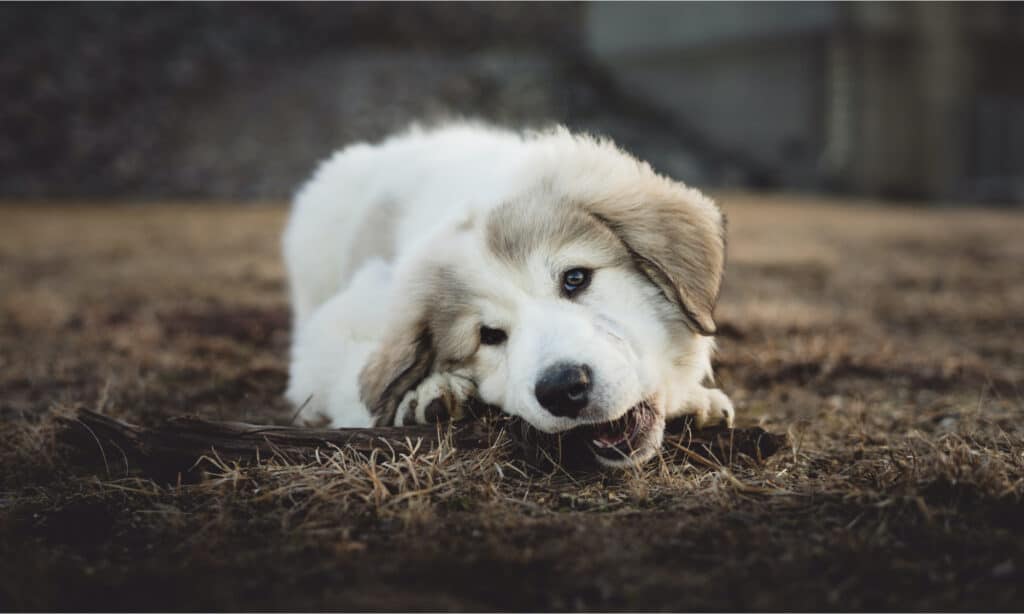
Detecting Canine Pica: How to Identify the Warning Signs and Seek Help
It’s important to detect warning signs of pica to ensure your dog’s well-being. This section will help you recognize and seek professional help. Timely identification and intervention can make all the difference in preventing complications and addressing the root causes of this behavior. So, let’s delve into the world of detecting canine pica, understanding the warning signs, and seeking the assistance your dog needs to overcome this challenge.
Red Flags: Recognizing Symptoms of Pica in Your Dog
Being able to spot the signs of pica in your dog is essential for early intervention and preventing potential health complications. Recognizing these red flags can help you take timely action and seek the appropriate assistance for your furry companion. Let’s examine the symptoms of pica in dogs and learn how to identify them:
- Unusual chewing and eating habits: A clear sign of pica is your dog persistently chewing or consuming non-food items like rocks, plastic, clothing, or paper. Observe changes in chewing habits and object preference.
- Gastrointestinal issues: If your dog is frequently experiencing vomiting, diarrhea, constipation, or abdominal pain, it could be an indication of pica. Ingesting non-food items can cause gastrointestinal disturbances and may require veterinary attention.
- Dental problems: Pica can lead to dental damage, such as cracked or broken teeth, worn enamel, or gum injuries. If you notice any changes in your dog’s dental health or eating habits, it’s worth considering whether pica may be the cause.
- Changes in behavior: Dogs with pica may exhibit behavioral changes, such as increased anxiety, restlessness, or attention-seeking behaviors. If you observe any unusual patterns in your dog’s behavior, it’s essential to investigate further and consider the possibility of pica.
Early detection and intervention are key to ensuring your dog’s health and well-being, so don’t hesitate to consult with a veterinarian if you suspect your dog is struggling with pica.
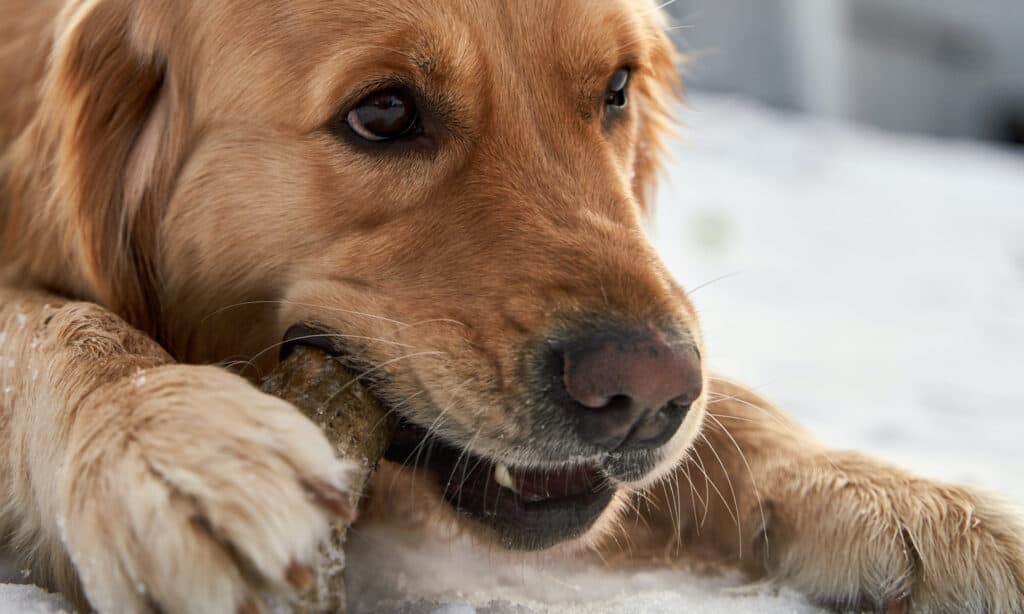
Consulting the Experts: When to Seek Veterinary Advice
As a dog owner, it’s essential to know when to consult a veterinarian about your dog’s pica behavior. Early intervention can prevent serious health complications and help you manage the underlying causes more effectively. Here’s some guidance on when to seek veterinary advice for your dog’s pica:
- Persistent or worsening pica behavior: If your dog’s pica behavior is consistent or intensifying despite your efforts to address the issue, it’s time to consult a veterinarian. They can help rule out any medical conditions and provide guidance on the best course of action.
- Symptoms of gastrointestinal distress: If your dog is experiencing vomiting, diarrhea, constipation, or abdominal pain after consuming non-food items, it’s crucial to seek veterinary advice. These symptoms may indicate gastrointestinal issues or obstructions that require immediate medical attention.
- Dental problems or injuries: If your dog is suffering from dental damage, such as cracked or broken teeth, or other injuries caused by pica behavior, it’s important to consult a veterinarian. They can assess the damage and recommend appropriate treatment options.
- Changes in behavior or health: Unusual changes in your dog’s behavior, mood, or overall health may be signs of an underlying issue related to pica. If you notice any such changes, it’s wise to consult your veterinarian for further evaluation and guidance.
Veterinarians are valuable resources in helping you navigate the complexities of canine pica, providing expert insight and tailored solutions for your dog’s unique needs.
Pica Diagnosis: Tests and Procedures for Determining the Cause
When you suspect your dog may be struggling with pica, it’s essential to consult your veterinarian, who can perform a series of tests and procedures to determine the underlying cause. A thorough diagnosis will help tailor the most effective treatment plan for your dog. Here are some common diagnostic tests and procedures that your veterinarian may use to identify the root cause of pica:
- Physical examination: Your veterinarian will begin with a comprehensive physical examination to assess your dog’s overall health and identify any potential issues related to pica, such as dental damage, injuries, or signs of gastrointestinal distress.
- Blood tests: Blood tests can help identify any underlying medical conditions, such as anemia or nutritional deficiencies, which may be contributing to your dog’s pica behavior. These tests can also reveal any signs of infection or inflammation in your dog’s system.
- Fecal examination: Checking your dog’s poop can reveal parasites or gut problems that could be behind their pica behavior.
- X-rays or ultrasound: If your veterinarian suspects that your dog has ingested a foreign object or is experiencing a gastrointestinal obstruction, they may recommend X-rays or an ultrasound. These imaging tests can help visualize any foreign bodies or blockages within your dog’s digestive system.
- Behavioral assessment: Your veterinarian may also perform a behavioral assessment to evaluate your dog’s environment, routine, and any potential stressors that could be contributing to pica. They may ask questions about your dog’s habits, diet, and exercise routine to help identify possible triggers.
By utilizing a combination of these tests and procedures, your veterinarian can determine the underlying cause of your dog’s pica and develop a tailored treatment plan to address the issue. With the right diagnosis and intervention, you can help your furry friend overcome pica and enjoy a happier, healthier life.

Tackling Canine Pica: Effective Treatments and Management Strategies
Medical Solutions for Pica in Dogs
As we’ve explored the various aspects of canine pica, it’s clear that addressing the root causes is crucial in managing this behavior. In this section, we’ll discuss medical solutions for pica in dogs, focusing on the treatments and interventions your veterinarian may recommend to help your furry companion overcome this issue. From addressing nutritional deficiencies to treating gastrointestinal problems or parasites, we’ll cover a range of medical approaches that can help your dog lead a healthier, pica-free life. So, let’s dive into the world of medical solutions and learn how to support your dog’s well-being with the help of veterinary expertise.
Nutritional Adjustments: How Diet Can Help Combat Pica
One of the key factors that can contribute to pica in dogs is an imbalanced or inadequate diet. By making nutritional adjustments and ensuring your dog receives all the essential nutrients they need, you can help combat pica and promote better overall health. Let’s explore how diet plays a role in pica management and the changes you can make to support your dog:
- Identifying deficiencies: Work with your veterinarian to determine if your dog’s diet is lacking in any essential nutrients, such as vitamins, minerals, or amino acids. Blood tests can help identify deficiencies that may be contributing to pica behavior.
- High-quality diet: Providing your dog with a high-quality, well-balanced diet is crucial for their overall health and well-being. Choose a dog food that meets your pet’s specific nutritional requirements, taking into account factors such as age, breed, size, and activity level. Consult your veterinarian for guidance on the best diet for your dog.
- Supplementing nutrients: In some cases, your veterinarian may recommend dietary supplements to address specific deficiencies in your dog’s diet. These supplements can help ensure your dog receives all the necessary nutrients and may help reduce pica behavior.
- Regular feeding schedule: Establishing a consistent feeding schedule can help regulate your dog’s digestion and discourage pica behavior. Make sure your dog is fed at the same times each day and receives an appropriate amount of food for their size and activity level.
- Monitoring progress: Keep track of your dog’s pica behavior as you make dietary adjustments. Monitoring their progress will help you and your veterinarian determine the effectiveness of these changes and make any necessary tweaks to your dog’s diet.
By focusing on your dog’s nutritional needs and making adjustments to their diet, you can address one of the potential causes of pica and promote better overall health.
Medication Management: Using Pharmaceuticals to Control Pica
In some cases, your veterinarian may recommend using medication to help control your dog’s pica behavior. This is particularly true when the underlying cause is medical or when other interventions have proven ineffective. Let’s discuss some pharmaceutical options that may be considered to help manage your dog’s pica:
- Antiparasitic medications: If your dog’s pica is caused by parasites, your veterinarian will prescribe appropriate antiparasitic medications to eliminate the infestation and alleviate any associated symptoms.
- Gastrointestinal treatments: For dogs experiencing gastrointestinal issues related to pica, your veterinarian may prescribe medications to alleviate symptoms such as diarrhea, constipation, or abdominal pain. They may also recommend medication to treat underlying conditions like gastritis or inflammatory bowel disease.
- Anti-anxiety medications: If your dog’s pica is driven by anxiety or stress, your veterinarian may suggest the use of anti-anxiety medications, such as selective serotonin reuptake inhibitors (SSRIs) or benzodiazepines. These medications can help reduce your dog’s anxiety levels, potentially decreasing pica behaviors.
- Appetite suppressants: In some cases, appetite suppressants may be prescribed to help curb your dog’s urge to eat non-food items. These medications should be used with caution and under the close supervision of your veterinarian.
- Other medications: Depending on the specific cause of your dog’s pica, your veterinarian may recommend other medications to address any underlying health issues. It’s essential to follow your veterinarian’s guidance and administer all medications as directed.
Remember, medication management should always be considered as part of a comprehensive treatment plan for your dog’s pica.
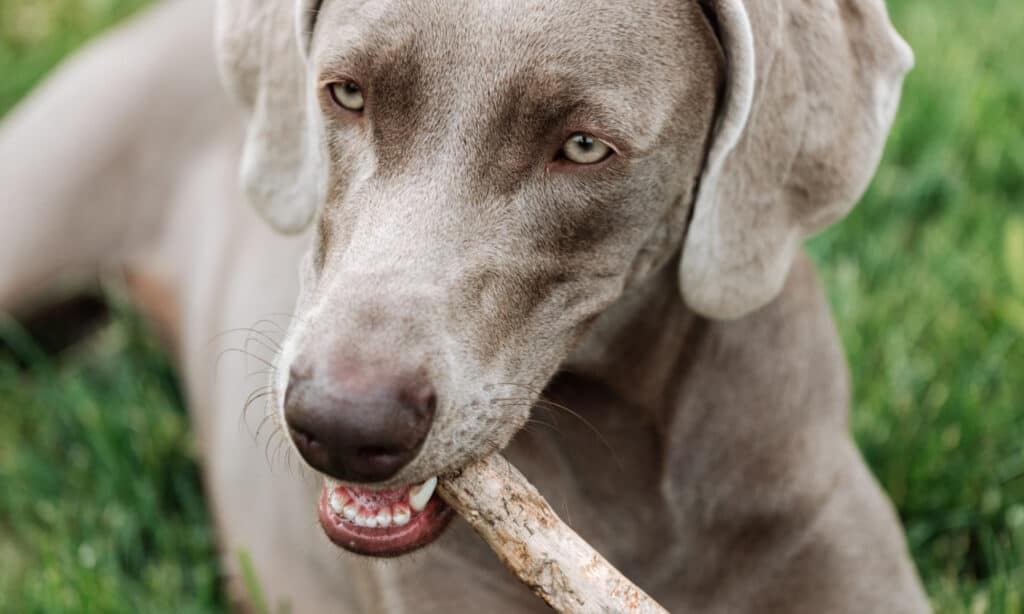
Surgical Intervention: When Pica Requires a Veterinarian’s Touch
In some instances, pica in dogs can lead to serious complications that require surgical intervention. While medication and behavioral management are often the first lines of treatment, surgery may be necessary if your dog experiences life-threatening health issues due to pica. Let’s discuss some scenarios in which your dog may need surgical intervention as a result of pica:
- Intestinal obstructions: If your dog has ingested a foreign object that causes a blockage in their gastrointestinal tract, surgery may be required to remove the obstruction. Left untreated, blockages can lead to severe pain, infection, and even death.
- Perforation or damage to the digestive tract: Consuming non-food items can cause injuries to your dog’s digestive tract, such as tears or perforations. In these cases, surgery is often necessary to repair the damage and prevent life-threatening complications.
- Dental issues: Severe dental damage caused by pica may require surgical intervention. This could include tooth extractions or repair of broken or cracked teeth to prevent pain, infection, and further damage.
- Foreign body removal: In some cases, non-food items ingested by your dog may become lodged in their body and cause ongoing issues or infections. Surgical removal of these foreign bodies can help restore your dog’s health and prevent further complications.
It’s essential to monitor your dog closely and consult your veterinarian if you suspect your dog is experiencing complications related to pica. Early intervention and appropriate treatment can make a significant difference in your dog’s health and well-being.
Behavioral Approaches to Pica Prevention
In addition to medical treatments, addressing the behavioral aspects of your dog’s pica is crucial for successful management and prevention. By understanding and addressing the triggers that contribute to pica, you can help your dog develop healthier habits and reduce the risk of future issues. Let’s explore some behavioral approaches to pica prevention:
- Environmental enrichment: Providing your dog with a stimulating environment can help reduce boredom and decrease the likelihood of pica. Offer toys, puzzles, and interactive games to keep your dog mentally engaged and entertained.
- Regular exercise: Ensuring your dog gets sufficient physical exercise can help reduce stress, anxiety, and boredom, all of which can contribute to pica. Establish a consistent exercise routine tailored to your dog’s breed, age, and energy level.
- Positive reinforcement training: Train your dog using positive reinforcement techniques to teach them what is appropriate to chew and what is not. Reward your dog for making the right choices and redirect their attention to appropriate chew toys when they show interest in non-food items.
- Addressing anxiety and stress: Identify and address any sources of stress or anxiety in your dog’s environment. This might involve providing a safe, quiet space for your dog to retreat to or using calming aids like pheromone diffusers or anxiety vests.
- Obedience training: Teaching your dog basic obedience commands, such as “leave it” or “drop it,” can be useful in managing and preventing pica. Consistent training will help your dog understand what is expected of them and make it easier for you to intervene if they show interest in non-food items.
- Professional help: If your dog’s pica is severe or persistent, consider consulting a professional dog trainer or veterinary behaviorist.
By implementing these behavioral approaches, you can help your dog develop healthier habits and reduce the likelihood of pica.
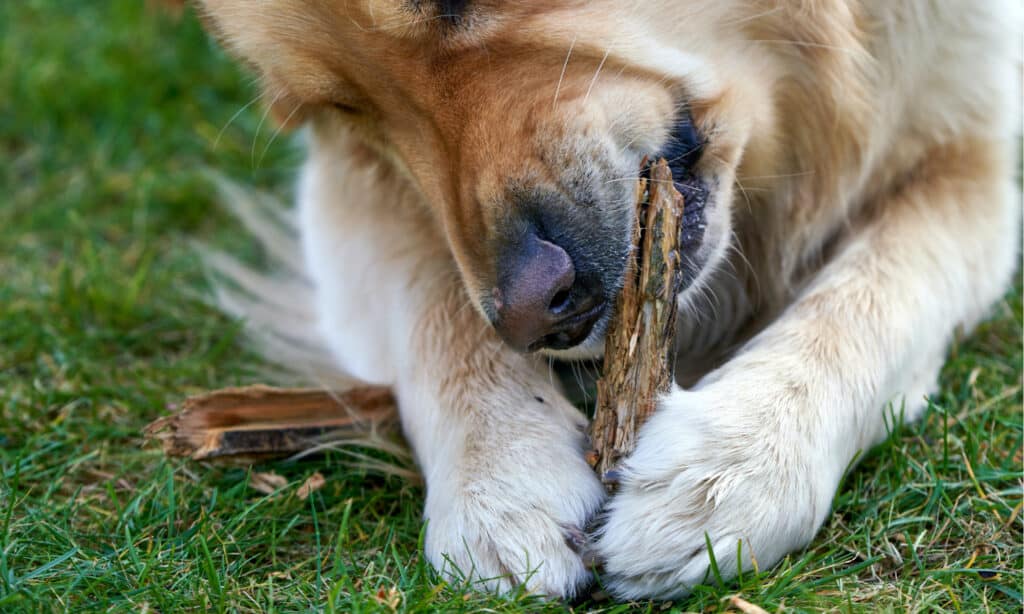
Environmental Enrichment: Keeping Your Dog Engaged and Pica-Free
Creating an engaging and stimulating environment is crucial for your dog’s mental and physical well-being. By providing your dog with a variety of activities, toys, and challenges, you can reduce boredom and anxiety, which are known to contribute to pica. Let’s explore some ways to keep your dog engaged and pica-free through environmental enrichment:
- Interactive toys: Offer your dog a selection of interactive toys that encourage problem-solving, such as puzzle feeders, treat-dispensing toys, and snuffle mats. These toys can help keep your dog’s mind occupied and provide mental stimulation.
- Rotating toys: Regularly rotate your dog’s toys to keep their interest piqued and prevent boredom. Introducing new toys or bringing out old favorites can help maintain your dog’s enthusiasm for play.
- Socialization: Provide your dog with opportunities for social interaction with other dogs and people. Regular playdates, visits to dog parks, or enrolling in doggy daycare can help alleviate boredom and provide social stimulation.
- Training sessions: Engaging your dog in regular training sessions not only strengthens your bond but also keeps your dog’s mind active. Teach your dog new tricks, commands, or even enroll them in a dog sport like agility or nose work.
- Physical exercise: Ensure your dog has ample opportunities for physical exercise tailored to their breed, age, and energy level. Walks, hikes, or games like fetch can help keep your dog physically fit and mentally engaged.
- Calming spaces: Create designated calming spaces within your home for your dog to retreat to when feeling overwhelmed or stressed. This could include a cozy bed, crate, or a separate room with soft lighting and soothing music.
Enrichment strategies engage dogs, stimulate them mentally, and reduce pica behavior.
Training and Obedience Classes: Teaching Your Dog to Resist Pica Temptations
Proper training and obedience classes can be a valuable tool in teaching your dog to resist pica temptations. Enrichment strategies engage dogs, stimulate them mentally, and reduce pica behavior. Let’s delve into how training and obedience classes can assist in managing your dog’s pica:
- Basic obedience training: Start by teaching your dog basic commands such as “sit,” “stay,” “leave it,” and “drop it.” These commands can be invaluable in redirecting your dog’s attention away from non-food items and preventing pica incidents.
- Positive reinforcement: Use positive reinforcement techniques, like treats, praise, or play, to reward your dog for exhibiting desirable behaviors. This will help them associate good behavior with positive outcomes, making it more likely they’ll continue to follow your guidance.
- Consistency and repetition: Be consistent with your training and practice regularly. The more often you work with your dog on their obedience skills, the more ingrained these behaviors will become.
- Obedience classes: Enrolling your dog in obedience classes can provide a structured environment for learning and practicing essential commands. Professional trainers can offer guidance and support as you work to manage your dog’s pica behavior.
- Advanced training and dog sports: For dogs that excel in basic obedience, consider exploring advanced training or dog sports such as agility, flyball, or scent work. These activities provide mental and physical stimulation while reinforcing positive behavior.
- Customized training plans: If your dog’s pica is particularly severe or challenging, consult with a professional dog trainer or veterinary behaviorist. They can help you develop a customized training plan tailored to your dog’s specific needs and triggers.
By investing time and effort in training and obedience classes, you can teach your dog to resist pica temptations effectively.

Consistency is Key: Establishing Routines and Boundaries to Prevent Pica
Consistency plays a crucial role in successfully managing and preventing pica in dogs. By establishing routines and setting clear boundaries, you can create an environment in which your dog understands what is expected of them, making it easier to prevent pica behavior. Let’s discuss the importance of consistency and how to implement routines and boundaries to keep your dog pica-free:
- Daily routines: Establish a daily routine that includes regular feeding times, walks, play sessions, and rest periods. This structure will help your dog feel secure and reduce stress, anxiety, or boredom that could contribute to pica behavior.
- House rules: Set clear rules and boundaries within your home. For example, designate specific areas where your dog is allowed to chew on their toys and make sure everyone in the household enforces these rules consistently.
- Clear communication: Use consistent verbal cues and body language to communicate with your dog. This will help them understand what is expected of them and make it easier for you to intervene if they show interest in non-food items.
- Reward-based training: Be consistent in rewarding your dog for making the right choices, such as choosing to chew on their toys instead of non-food items. This will reinforce the positive behavior and make it more likely to continue.
- Addressing setbacks: If your dog engages in pica behavior, calmly and firmly redirect them to an appropriate activity or toy. Avoid punishment, as it can exacerbate stress and anxiety, potentially worsening the issue.
- Supervision and management: Monitor your dog closely, especially in environments where they may encounter non-food items. Use baby gates, crate training, or tethering to help manage your dog’s access to potential pica temptations.
By maintaining consistency in your dog’s routine, communication, and training, you can create a stable environment that helps prevent pica behavior.
Safety Measures and Pica Prevention
As a responsible dog owner, it’s essential to take proactive steps to keep your furry friend safe from the dangers of pica. In this section, we’ll explore various safety measures and pica prevention strategies that can help protect your dog from ingesting non-food items and ensure their well-being. From securing your home to providing appropriate outlets for their chewing instincts, these practical tips will help you create a safe environment for your dog and minimize the risk of pica-related incidents. So, let’s dive into the world of safety measures and pica prevention to keep your beloved canine companion happy, healthy, and free from harm.
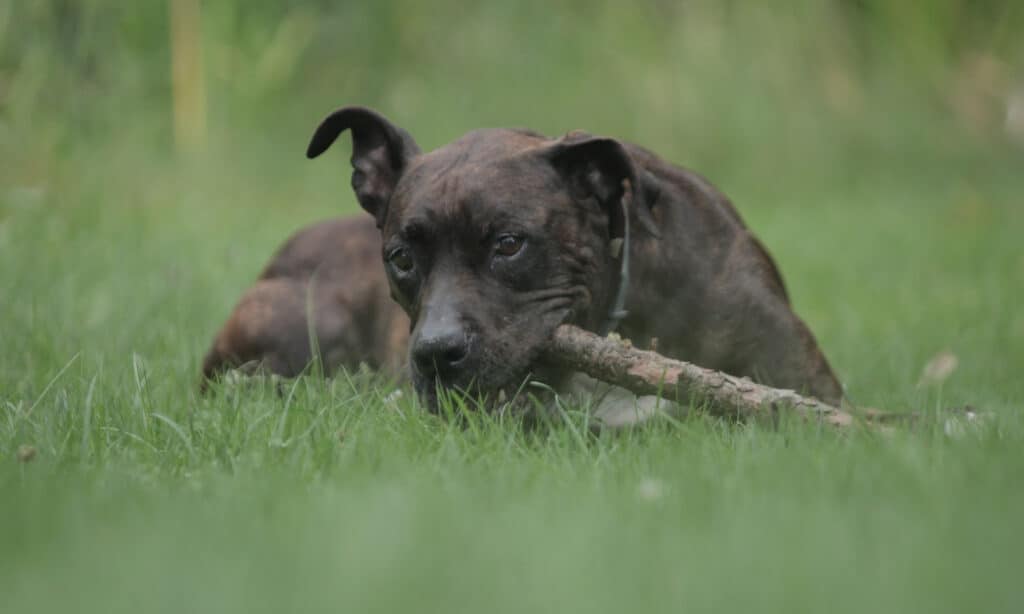
Dog-Proofing Your Home: Minimizing Pica Hazards Indoors
Creating a safe environment for your dog is crucial in minimizing the risk of pica-related incidents indoors. Just as you would child-proof a home, dog-proofing your living space can help protect your furry friend from potential hazards. Let’s explore some effective ways to minimize pica hazards indoors and keep your dog safe:
- Secure trash cans: Invest in dog-proof trash cans or keep them stored in a cabinet or pantry to prevent your dog from scavenging through the garbage and ingesting harmful items.
- Store household items safely: Keep potentially dangerous items like cleaning products, medications, batteries, and small objects out of reach. Use childproof locks on cabinets and drawers if necessary.
- Manage cords and wires: Secure electrical cords and wires to prevent your dog from chewing on them, which could result in electrical shock or injury.
- Keep personal items out of reach: Store shoes, clothes, children’s toys, and other personal belongings in closets or on high shelves to prevent your dog from chewing on them.
- Create a designated dog-safe area: Set up a designated area in your home where your dog can relax and play with their toys without access to off-limits items.
- Monitor houseplants: Many common houseplants can be toxic to dogs if ingested. Research the plants in your home and either place them out of reach or replace them with pet-friendly options.
By taking the time to dog-proof your home, you can effectively minimize the pica hazards indoors and create a safer environment for your canine companion. Remember, prevention is key when it comes to keeping your dog healthy and out of harm’s way.
Supervising Outdoor Activities: Keeping Your Dog Safe from Pica Risks
The great outdoors can be a treasure trove of non-food items that tempt dogs with pica. To keep your furry friend safe from pica risks while outside, it’s essential to supervise their outdoor activities closely. Here are some strategies for ensuring your dog’s safety and preventing pica incidents in outdoor environments:
- Leash walks: Keep your dog on a leash during walks to maintain control and prevent them from picking up dangerous objects. Pay attention to your surroundings and redirect your dog if they show interest in non-food items.
- Fenced-in areas: If you have a backyard or outdoor space, make sure it is securely fenced to keep your dog confined and safe. Regularly inspect the area for potential hazards, such as rocks, sticks, or debris, and remove them as needed.
- Teach the “leave it” command: Train your dog to respond to the “leave it” command, which can be an invaluable tool in preventing them from picking up or ingesting non-food items outdoors.
- Outdoor toys: Provide your dog with appropriate outdoor toys, such as balls or frisbees. This helps satisfy their natural chewing instincts and discourage them from seeking out non-food items.
- Watch for harmful substances: Be vigilant about keeping your dog away from harmful substances outdoors, such as antifreeze, pesticides, or fertilizers, which can be highly toxic if ingested.
- Stay alert in unfamiliar environments: When visiting unfamiliar outdoor locations, such as parks or hiking trails, be extra vigilant in supervising your dog and preventing them from picking up unknown objects that could pose a risk.
By closely supervising your dog’s outdoor activities and taking proactive steps to ensure their safety, you can effectively minimize the pica risks they may encounter outside.
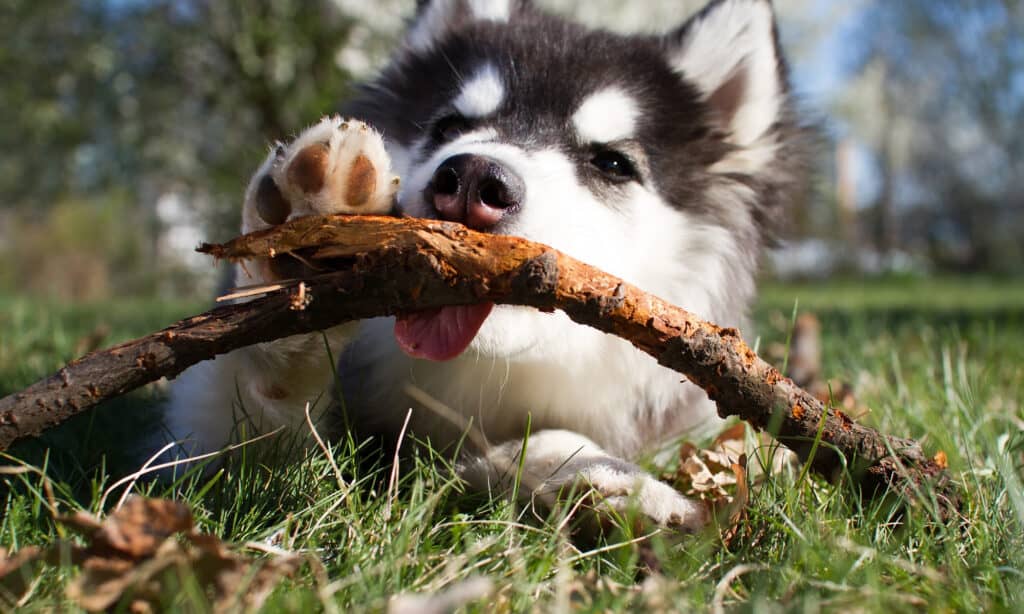
Deterrent Tactics: Tools and Techniques to Discourage Pica
While prevention and supervision are crucial in managing pica, there are also various deterrent tactics that can be employed to discourage your dog from engaging in this behavior. These tools and techniques can help teach your dog to resist the temptation of non-food items and ultimately curb their pica habits:
- Taste deterrents: Use safe, non-toxic taste deterrents, such as bitter sprays, on items your dog is prone to chewing. These products can make the objects taste unpleasant, helping to discourage pica behavior.
- Dog-safe chews and toys: Provide your dog with a variety of dog-safe chews and toys that cater to their natural instincts to chew, lick, and explore. This can help redirect their attention away from non-food items and prevent pica incidents.
- Puzzle toys and food-dispensing toys: Engage your dog’s mind with puzzle toys and food-dispensing toys that challenge them mentally and provide positive reinforcement for appropriate behaviors.
- Positive reinforcement training: Reward your dog for appropriate behaviors and ignoring non-food items. Use treats, praise, and affection to reinforce good habits and discourage pica.
- Crate training: If your dog is prone to ingesting non-food items when unsupervised, consider crate training to provide a safe, confined space when you’re unable to monitor them closely.
- Professional dog training: If your dog’s pica behavior persists despite your efforts, consider enlisting the help of a professional dog trainer who can provide personalized guidance and support.
By implementing these deterrent tactics, you can help your dog understand that non-food items are off-limits and reduce the likelihood of pica-related incidents.
Conclusion: Taking Charge of Your Dog’s Pica for a Happier, Healthier Canine Companion
In conclusion, understanding and managing your dog’s pica behavior is essential for their overall well-being and safety. By learning about the potential causes, recognizing the warning signs, and seeking expert advice, you can tackle pica head-on and provide your furry friend with the best care possible. Remember that consistency, patience, and perseverance are key in overcoming this challenging behavior.
Implementing preventative measures and safety precautions, both indoors and outdoors, will significantly reduce the risks associated with pica. Furthermore, employing deterrent tactics and engaging your dog’s mind through training and enrichment activities will help them develop healthier habits and resist the temptation of non-food items.
By taking charge of your dog’s pica and working together to overcome it, you can create a happier, healthier, and safer environment for your beloved canine companion. In the end, the time and effort you invest in understanding and managing your dog’s pica will lead to a stronger bond and a more fulfilling life together.
~Lindsie
